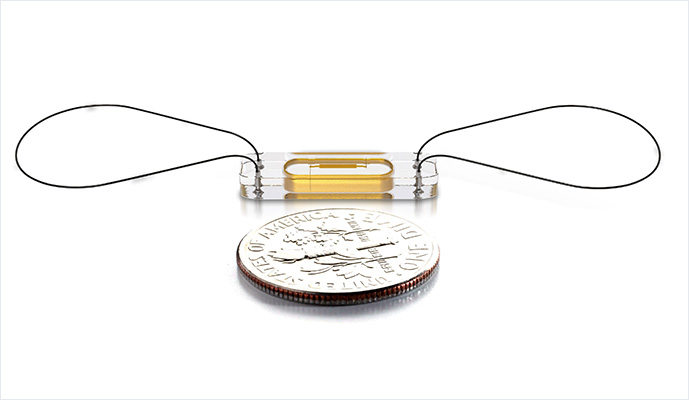Evaluation
Your doctor will determine whether you're eligible for this monitoring system. You may be a candidate if you meet all the following criteria:
- You have been diagnosed with class ll or class lll heart failure.
- You have been hospitalized for heart failure at least once in the previous 12 months or you have elevated natriuretic peptides (or both).
- You are able to take two antiplatelet medications (aspirin and clopidogrel) to prevent blood clots for at least one month after the sensor is implanted.
Procedure
To have the sensor implanted, patients undergo a right heart (or Swan-Ganz) catheterization, in which a catheter (a thin, plastic tube) is passed through blood vessels to reach the heart's right side and the arteries leading to the lungs. UCSF interventional cardiologists perform this procedure on an outpatient basis at our cardiac catheterization lab. The process takes one to two hours, during which you'll receive mild sedation to keep you comfortable but you won't be completely asleep.
The cardiologist makes a small incision near your groin and inserts a catheter carrying the sensor into the femoral artery. Guided by X-ray images, the doctor threads the catheter through blood vessels toward your heart and places the device in either your left or right pulmonary artery (depending on your anatomy). Once it's in place, the catheter is removed and the incision closed.
You'll likely be able to go home the same day. You may have mild pain or bruising at the incision site lasting a few days. You'll receive instructions on how to care for the wound and on any activity restrictions for the next few days.
To prevent blood clots around the device, you'll need to take a blood-thinning medication (if you're not already on one) called clopidogrel (Plavix) and a daily aspirin for at least one month after implantation.
Follow-up
We will instruct you on how to transmit the results from the CardioMEMS sensor. We recommend sending your readings at the same time every day. It's best to do this in the morning after you have used the bathroom, recorded your weight and taken your morning medications.
If a change in pulmonary artery pressure is detected, a nurse will call you and provide instructions from your doctor, which may include medication changes. Sometimes weekly blood tests are needed during changes to your medication regimen.
Please make sure we have your current contact information at all times, in case we need to reach you right away.











